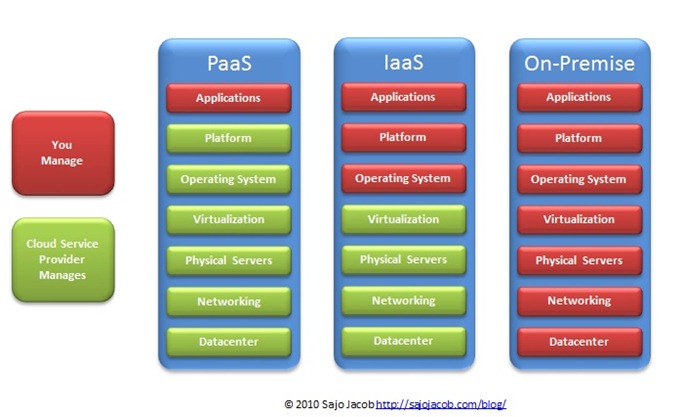Celebrating Hebron - Read Now!
View Past IssuesAmazon Web Services (AWS) is the fastest growing cloud computing platform on the planet. AWS is located in 14 regions around the world and offers availability zones in up and coming regions. Each region consists of 2 or more data centers or (availability zones). A double data center is necessary as a precautionary measure from hazards or disaster. Losing data and/or operation interruptions is simply not an option for the companies around the globe who rely on AWS each day for successful operations and expansion.

In its simplest terms, cloud computing is the access and availability of computing power for database storage, applications, and other IT resources through a cloud services platform via the internet. It has a pay-as-you-go pricing strategy which allows companies to grow, scale and succeed.
So cloud computing is NOT your programs or data stored on your computer. It’s the opposite of that. It’s your storage and applications accessed over the internet. Think about it. With so much data required these days to run a business, doesn’t it make perfect sense to remove the overwhelming task of managing and storing it all, and give that to someone else, while you get on with biz?

The Amazon Web Services solution is pretty simple actually. Look at it like this. Your computer files can either be “on site” on your computer, or “off site” in the cloud. Think “retail shop”. If you have all your supplies and inventory for your shop under one roof, at the shop that’s one solution. But you grow so big it all won’t fit in so you need another solution. That shop inventory can also be in storage in a warehouse (or cloud) allowing you to have access to much more inventory options and much greater growth capacity. What would you prefer?

Yes, we thought so. And so did many others. Cloud computing is such big business that it generated about $127 billion in 2017 and is predicted to be up to $500 billion by 2020. With the onset of cars, we built roads and then cities. With the onset of the internet, we built cloud and cloud applications. Both eras have led us into a new and exciting future.
Chris Pinkham and Benjamin Black from South Africa envision the future of Amazon Web Services in 2003. They suggested selling off their excess compute capacity as a service to web service buyers. As a result, Amazon Web Services was officially launched in 2006 and by 2007 there were 180,000 developers on the platform. Amazon Web Services took off because it was so inexpensive to use and for developers the programs and platforms that could avail of AWS were unprecedented. By 2015 AWS revenue was $6Billion USD per annum. Revenues have doubled since then and continue to grow at an exponential rate. Today there are over 1300 new services and updates to the AWS platform which you can see on their YouTube channels that present weekly launches of new services.
For those who understand the power of AWS and its importance in the future, there are certifications that have been launched to educate AWS enthusiasts. There are currently eight AWS certifications ensuring users are educated and keeping up with the technological advances of AWS.
AWS’s growth performance is notable, as it is outperforming web services and cloud services compared to well-known industry giants such as Cisco, Dell EMC, IBM, HP Enterprise, Oracle, and others.
The beauty of cloud, is that you can compute anywhere, anytime and with wifi, you can be completely free of any connections. When you are cloud computing you are easily storing and accessing data and programs over the Internet instead of your computer’s on your computer hard drive. That translates to much better storage capacity as well as speedier service. So the word “cloud” is a metaphor for “out there in the clouds”. You’re not sure where it’s just up there. You never actually go there but you know it’s happening out there independent of you.
The National Institute of Standards and Technology (NIST) defines cloud with five essential characteristics. 1. On-Demand Self Services 2. Broad Network Access 3. Resource Pooling 4. Rapid Elasticity 5. Measured Services
Don’t let those characteristics over-complicate you, all it really means is that everything and anything you want to do, have or store is possible in the cloud. And on top of that scaling, your company projects just got a whole lot easier for companies growing at exponential rates. Think Airbnb, Sales Force, and Netflix.

Cloud computing for business there are three major services offered.
1. Software as a Service - SaaS (this is for you subscribe to an application)
2. Platform as a Service - PaaS (this is for creating custom designed applications within your business)
3. Infrastructure as a Service - IaaS (this is where you rent or pay a fee for applications that help build your company)
So for example, Sales Force can provide services to you because it relies on custom applications and infrastructure applications. So in this case Sales Force was built as a software service. It was built on Platforms and infrastructures provided by cloud computing companies like Amazon Web Services, IBM or Google.
Cloud computing companies are those that offer Platforms (PaaS) and Infrastructure (IaaS) to other companies that want to store information and build their businesses. Think of it like a store again. Cloud computing companies are big warehouses that help you solve your storage needs but they also help you build your company with specially designed applications offered to you within that warehouse. So it’s a warehouse for storage and building. Neat heh!
What makes AWS so popular is its ability to provide scalable options to its customers which are an absolute must for the type of “platform” businesses emerging. Some of the greatest platforms in the world use AWS as their growth. We’ve shifted from physical address to online “platform”. Think Netflix, NASA, Expedia, Airbnb, Adobe Systems, Lionsgate, Samsung, Alcatel-Lucent, Autodesk, BMW, Nokia, Canon, Capital One, Comcast, Docker, Pfizer, Yelp, GE, Hitachi, Johnson & Johnson, Spotify, Time Inc., Unilever, Vodaphone, Slack, Siemens, Schneider Electric and many more.
The compute capacity of the world’s cloud is taken up by Amazon at about 90% of the public cloud computing space and as a result AWS, it is the largest public cloud computing platform on the planet. Wow!

By now your mind is probably dreaming about what AWS can do for your organization. So let’s get going. Signing up to Amazon Web Services is easy and free. As a stand alone pay-as-you-go system, AWS works extremely well for companies and large enterprises that want to scale up and grow and to avail of the new digital era. Vast and varied the building blocks of AWS are unprecedented in the world. Sign up and take a look!
Amazon Web Services offers cloud-based products that allow you to compute, access storage, create databases, run analytics, develop networking, incorporate mobile, access developer tools, utilize management tools, avail of the IoT, implement security and utilize enterprise applications. That means your company can grow faster, lower its IT costs, and scale up at exponential rates. AWS is trusted by the largest enterprises and the hottest start-ups to power a wide variety of workloads including web and mobile applications, game development, data processing and warehousing, storage, archive, and a whole lot more. Here are a few of the featured Amazon EC2 customers that we all know and love.

That means your company can grow faster, lower its IT costs, and scale up at exponential rates. AWS is trusted by the largest enterprises and the hottest start-ups to power a wide variety of workloads including web and mobile applications, game development, data processing and warehousing, storage, archive, and a whole lot more. Here are the Amazon products. Ready to dive in?

Source: aws.amazon.com, sojojacomb.com
___________________________________________________________
IS DEVELOPING EXCELLENT CONTENT IMPORTANT TO YOU?
If so, I can assist:

Tina Olivero - The OGM
Tina Olivero is the 26-year publisher and journalist with TheOGM.com.
We develop content that keeps people engaged and rocks the internet.
If you’d like assistance with your content please let me know: tinaolivero@theogm.com
Did you enjoy this article?
We respect your privacy and will never share your information with third parties.